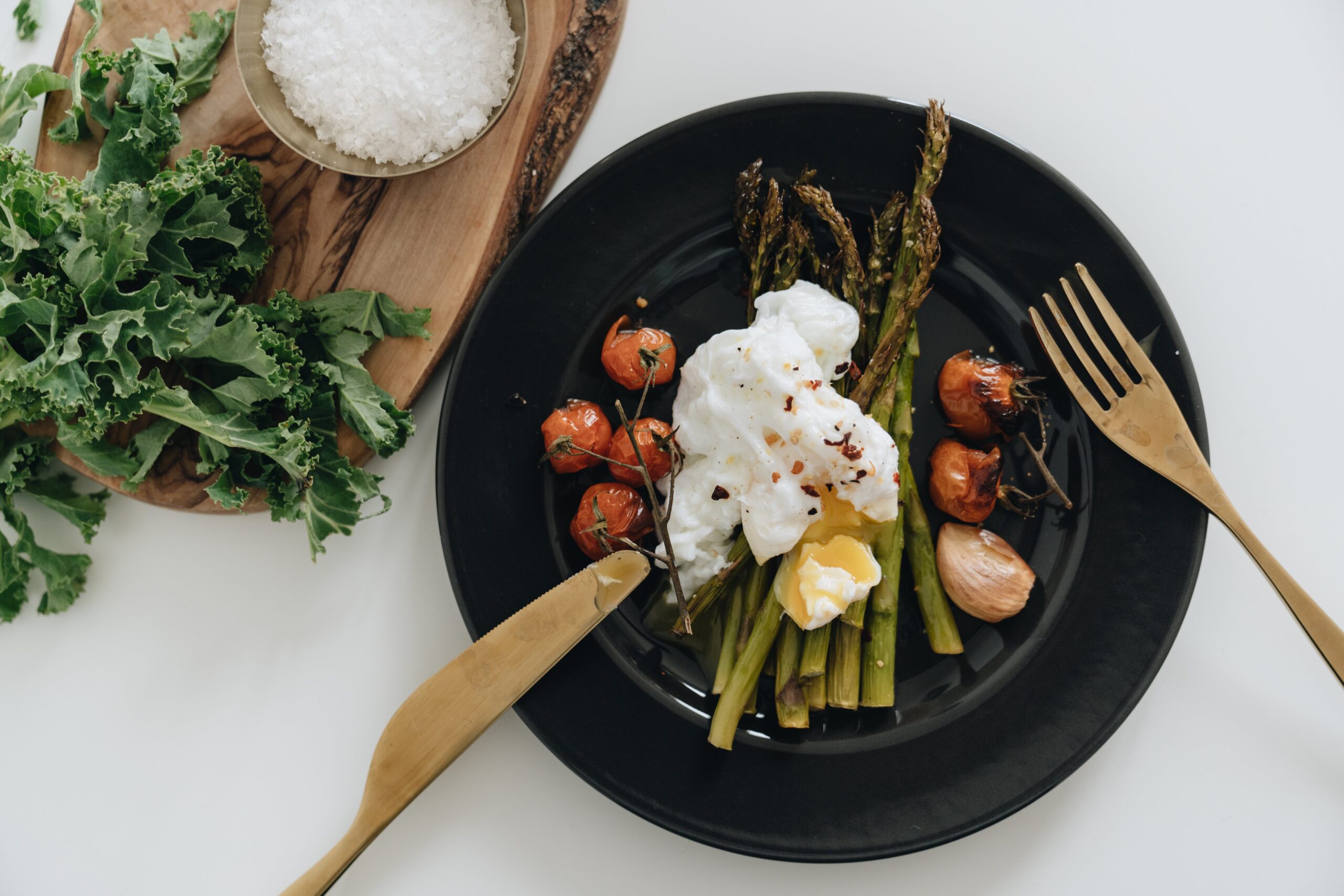Stroke is a leading cause of death and serious disability. According to the Australian Institute of Health and Welfare (AIHW), in 2020 an estimated 39,500 strokes occurred in this country—that’s more than 100 every day. Furthermore, the AIHW reports stroke as being the underlying cause of 8,500 deaths in 2021.
However, the Stroke Foundation states that more than 80% of strokes could be prevented.
A key aspect of stroke prevention is to eat a healthy, balanced diet, and in this article, we’ll discuss what that involves.
Understanding stroke
A stroke occurs when the blood supply to part of the brain is interrupted or reduced. This stops your brain cells from getting the oxygen and nutrients that they need. Without this, your brain cells can die and the affected area can be permanently damaged. That in turn can affect how parts of the body function. The effects of a stroke depend on where in the brain it happens and the size and functions of the damaged area. Stroke can cause permanent brain damage, long-term disability or death.
There are two main types of strokes:
- Ischaemic strokes—the most common type, these occur when a blood clot blocks the flow of blood to the brain.
- Haemorrhagic strokes—these occur when a blood vessel inside the skull bursts and bleeds into and around the brain.
There is another kind of stroke, called a transient ischemic attack (TIA). In a TIA, blood flow to the brain is blocked for only a short time.
Nutritional choices for stroke prevention
Together, the Australian Dietary Guidelines and the Australian Guide to Healthy Eating provide up-to-date advice about the amounts and types of foods that can help lower your risk of stroke. Two of the dietary recommendations for stroke prevention made in the Dietary Guidelines are that we should:
- Enjoy a wide variety of nutritious foods from the five food groups every day. And drink plenty of water.
- Limit intake of foods containing saturated and trans fats, added salt, added sugars and alcohol.
The five food groups mentioned in that first point are:
- Vegetables and legumes/beans—aim for a wide variety.
- Fruit—aim for a wide variety.
- Grain and cereal foods—aim for mostly whole grains, low-GI and/or high-fibre varieties.
- Lean meat and poultry, fish, eggs, tofu, nuts, seeds, legumes and beans.
- Milk, yoghurt, cheese and/or alternatives—aim for mostly reduced fat and fortified alternatives.
The Australian Guide to Healthy Eating shows the proportions of the five food groups we should eat every day.
When it comes specifically to reducing stroke risk, research suggests that a diet that is rich in the following types of food can be beneficial:
- high-fibre foods
- fruits and vegetables
- whole grains
- healthy fats
- lean proteins.
It is important to ensure that you have balance in your diet. A balanced diet is one that meets all the body’s daily nutritional requirements without exceeding its energy requirements (in nutritional terms, energy is something which is released from food to provide fuel for the body). Energy requirements vary with age, gender, body size and activity levels. For example, if you exercise a lot, you will have higher energy requirements than someone who spends a lot of their time sitting and being inactive.
There are several diets (or ‘eating patterns’) that are healthy, balanced and are thought to support stroke prevention. One of the best known of these is the Mediterranean diet.
The Mediterranean diet and stroke prevention
Research suggests that the Mediterranean diet can be effective in preventing stroke and reducing risk factors such as obesity, diabetes, high cholesterol and high blood pressure.
Dietitians Australia sums up a Mediterranean dietary pattern as:
- the daily consumption of vegetables, fruits, whole grains and legumes
- healthy fats such as extra virgin olive oil and nuts being consumed daily
- fish and seafood being eaten at least twice per week
- the moderate consumption of eggs, poultry and dairy products
- red meat being eaten at most twice per week.
Two particular aspects of the Mediterranean diet are thought to reduce stroke risk:
- A central part of the diet is olive oil, which contains antioxidants and monounsaturated fats, particularly oleic acid and polyphenols, both of which support heart health.
- The diet is low in saturated fats, trans fats, salt and added sugar, all of which are associated with higher risk of stroke.
Here are some ideas for ways of reducing cholesterol and dietary changes that can help.
The DASH (Dietary Approaches to Stop Hypertension) diet was created specifically to help people manage their blood pressure through diet alone. This eating pattern includes fruits, vegetables, whole grains and lean protein while restricting added sugar, saturated fat and sodium (salt) intake. The DASH plan encourages high-fibre foods like beans, nuts and seeds as an important source of healthy monounsaturated and polyunsaturated fats, magnesium potassium and protein.
The DASH diet has been shown to reduce high blood pressure (hypertension). It’s important for individuals with hypertension or those at risk for cardiovascular disease to consult with healthcare professionals, including doctors and registered dietitians, to create a plan that is tailored to their specific health needs and conditions. Dietary changes, in conjunction with other healthy lifestyle habits, can contribute to better blood pressure management and overall cardiovascular well-being.
What are five things that can prevent a stroke?
As important as healthy eating is in the prevention of stroke, other lifestyle factors play a significant role. These include:
Being physically active
The National Physical Activity Guidelines for Australian Adults make the following recommendations:
- Think of movement as an opportunity, not an inconvenience.
- Be active every day in as many ways as you can.
- Engage in at least 30 minutes of moderate-intensity physical activity on most—preferably all—days of the week.
- Do muscle-strengthening activities at least 2 days per week.
- Break up long periods of sitting as often as possible.
If possible, also enjoy some regular, vigorous activity for extra health and fitness benefits.
Maintaining a healthy weight
Having excess body fat, particularly around your midsection, increases your chance of having a stroke. To keep your weight in a healthy range, focus on making small and realistic changes to your lifestyle to improve your diet and increase your physical activity.
Quitting smoking
Smoking doubles your risk of stroke. If you are considering quitting smoking:
- call Quitline on 131 848 or visit the Quitline website
- speak to your doctor or chemist.
Moderating alcohol consumption
Alcohol can cause high blood pressure and atrial fibrillation, both of which increase the risk of stroke.
Managing stress
High stress levels can raise blood pressure and affect the blood’s ability to clot. However, there are many things you can do to manage and reduce your stress:
- exercising regularly
- understanding the types of situations that make you stressed and, if you can, avoid them
- giving yourself some time to relax each day
- making time to socialise and have fun
- eating healthily
- having a healthy sleep schedule.
The role of hydration in stroke prevention
Proper hydration plays a vital role in stroke prevention. Dehydration causes blood to thicken, which can increase blood pressure due to the body retaining salt. Drinking enough water regularly prevents dehydration.
Practical tips for a stroke-preventative diet
Practical tips for maintaining a stroke-preventative diet include consuming:
- whole grains
- fruits and vegetables
- low-fat dairy
- lean meats
- nuts and seeds.
It is very beneficial to limit your consumption of discretionary food (also known as ‘junk food’) as it contains unhealthy levels of salt, fat and sugar and lacks nutrients.
Some examples of junk food are:
- ice cream, cakes, donuts, lollies and chocolate
- takeaway ‘fast foods’ such as hot chips, fried chicken, pizza and burgers
- chips
- sugary drinks (such as cordial, energy drinks and soft drinks)
- alcoholic drinks.
Monitoring and maintaining a stroke-preventative diet
If you’re adopting a stroke-preventative diet, it’s a good idea to monitor your progress and make changes as necessary. Recording measurements, such as your weight, body fat and resting heart rate, can be done either in conjunction with your healthcare provider or by using a device such as a smartwatch.
Tips to help ensure that you keep going with your diet include:
- Finding your purpose: if your main reason for wanting to prevent a stroke is to have more quality time with your family, for example, this provides a strong reason not to give up.
- Have accountability structures: telling people that you’re going to adopt a new diet and informing them of your progress may help stop you from quitting.
- Make sustainable action easy: to build new habits, it can be helpful to start with small, achievable goals. Remember, change is a process and it takes time. Be patient with yourself and celebrate any victories (no matter how small) along the way.
Reducing the risk of stroke requires a multifaceted approach that includes making healthy nutritional choices. It is helpful to have the support of a healthy lifestyle program.
Life! is a free healthy lifestyle program that helps you improve your eating habits, increase your physical activity and manage stress. The program is for people who are at risk of developing type 2 diabetes, heart disease and stroke. If you are already living with diabetes, you are not eligible for the program, however there are other programs that can help you.
Life! is run by experienced health professionals, including dietitians and exercise physiologists, who guide and support you to make healthy lifestyle changes.
The program includes 7 sessions delivered over a 12-month period. You can choose from a group course or our telephone health coaching service. Learn more about the Life! program.
You can check your eligibility for the Life! program by taking a quick online test here.
Sources
Diet after stroke fact sheet – Stroke Foundation Australia
Healthy eating and stroke – Stroke Association
Mediterranean diet – Dietitians Australia
High-fiber diet might reduce stroke risk – Harvard Health
Nutrition and Stroke – Nutrition Australia
Nutrition position statement – Heart Foundation
Prevent Stroke: What You Can Do – Centers for Disease Control and Prevention
Stroke risk and prevention – Better Health Channel
Top 10 facts about stroke – Stroke Foundation Australia
World Stroke Day 2023: Know The Role Of Diet In Stroke Prevention And Recovery – MSN
Prevent Stroke – Stroke Foundation Australia





